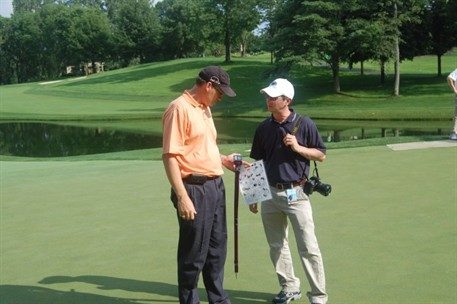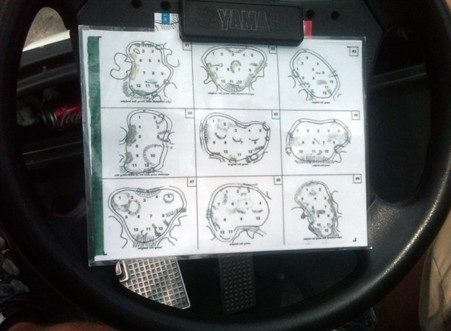For those of you enjoying the cool weather of winter, here in the United States we are experiencing high temperatures and equally high humidity. High humidity greatly reduces the evapotranspiration rate of the turf. When it is hot and humid turf managers often go out and apply water to "cool" the turf or worry about it being so hot the turf needs water. The result is a plethora of problems like wet wilt, algae, and increased wear injury. Thus, the axiom that the biggest problem in summer is overwatering rings true.
To check the soil moisture level common methods include visual inspection (bluish areas, footprints, etc. all signs of wilt) or using a knife, soil probe to check the relative amount of soil moisture. It is often difficult to communicate to the staff that will be watering greens either by hand or working the irrigation system how much to apply based on qualitative measurements. It is common to say for example to a staff member go water the hot spots on greens 7, 10 and 12. With an inexperienced staff member the result is often that some areas get too much water because the staff member wants to make sure the green doesn't dry out or not enough because the signs of wilt are not evident.
Increasingly, a small number of superintendents are embracing the idea of using soil moisture meters to determine how much water to apply (photo 1). One example is at the Ohio State University Golf Course where they started using soil moisture meters on a daily basis about one year ago. The greens have been divided into 12 sections (photo 2.). A staff member will take a reading from each of the areas and based on the percentage of water present, either flag the area or tell the hand watering crew the specific area that needs water.
The amount of water needed is based on collecting data from each of these greens over time (the root-zone mixes vary from pushup soil to two USGA green constructed greens). For example if 15 percent is the targeted level to give the desired quality and playing surface for the course then the appropriate amount of water is applied to raise it to that level or if the percent moisture is at or above the desired level no water is applied.

Example of a Soil Moisture Sensor
What is the appropriate amount?
In this case they have calibrated there hand watering crew. For example, they know that 4 minutes of water applied across the green will raise the moisture level 2 percent.
The bottom line is that they are delivering water to the areas that need it at the correct amount. The result has been a drop in the actual amount of water they are using. The actual time spent hand watering is reduced because you are hitting only the areas that need water with the desired amount - not too much or too little.
What is the price?
To reduce water use, labor costs intensify. Obviously, if you are an operation of only a few staff members this would be difficult to do. But if you are looking at managing, in this case, greens, at the optimum level the art of watering is being replaced with the science of watering.

Diagram of Green divided into 12
